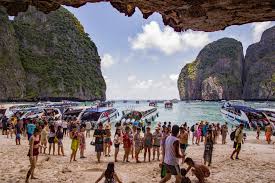Zora is a puzzle. What would it take for something to be indelibly inscribed in memory?
Consider my last post, about the significant and insignificant. Here Calvino describes a city that is memorable because it is entirely significant – everything within it does the work of signaling something else, and consequently it cannot be forgotten:
Beyond six rivers and three mountain ranges rises Zora, a city that no one, having seen it, can forget. But not because, like other memorable cities, it leaves an unusual image in your recollections. Zora has the quality of remaining in your memory point by point, in its succession of streets, of houses along the streets, and of doors and windows in the houses, though nothing in them possesses a special beauty or rarity. Zora’s secret lies in the way your gaze runs over patterns following one another as in a musical score where not a note can be altered or displaced. The man who knows by heart how Zora is made, if he is unable to sleep at night, can imagine he is walking along the streets and he remembers the order by which the copper clock follows the barber’s striped awning, then the fountain with the nine jets, the astronomer’s glass tower, the melon vendor’s kiosk, the statue of the hermit and the lion, the Turkish bath, the café at the corner, the alley that leads to the harbor. This city which cannot be expunged from the mind is like an armature, a honeycomb in whose cells each of us can place the things he wants to remember: names of famous men, virtues, numbers, vegetable and mineral classifications, dates of battles, constellations, parts of speech. Between each idea and each point of the itinerary an affinity or a contrast can be established, serving as an immediate aid to memory. So the world’s most learned men are those who have memorized Zora.
Italo Calvino, Invisible Cities, Cities & Memory 4
Here the city functions as a kind of memory palace, the kind that the ancient Romans would use as a mnemonic device. When they wished to commit something to memory they would create one of these geographical memory aids. For example, if Cicero were memorizing a speech he planned to deliver at the Forum, he would create a memory palace, shaping a visual geography for the speech within their head. Each element of the speech would be placed in a room – the introduction would take up one room, filled with objects that cued the mind to remember other pieces of information, the next section another room.
Yet as Calvino describes here, the consequence of being a literal memory palace is erasure. The city that cannot be forgotten, because every element is a signpost of something else – some event or idea – ends up disappearing:
But in vain I set out to visit the city: forced to remain motionless and always the same, in order to be more easily remembered, Zora has languished, disintegrated, disappeared. The earth has forgotten her.
Italo Calvino, Invisible Cities, Cities & Memory 4
Why is this the case? As Calvino suggests, we cannot live within a static world. That which is entirely memorable is already obsolete. To visit a place that cannot or will not change is to visit a place that is frozen in time, and unliveable.
This makes me think of the beaches of Thailand. When I lived in Thailand many beaches were already overdeveloped, over-visited. There were full moon festivals on the islands off the east coast of the southern peninsula. By the time I took a student group to visit in 2006 the beaches were even busier, even more developed. What had been full moon festivals had grown into full moon festivals, half moon festivals, an ongoing party that continued to trash things. Now the government is resorting to closing beaches for multiple years at a stretch, in hopes that the coral reefs and surrounding area will be able to somewhat recover from their treatment.

Ok, so change was happening. This wasn’t Zora, which remained the same, frozen in memory.
And yet… it was like Calvino’s city. Each visitor tried to capture a feeling, a meaning, that they believed the beach carried, from previous experiences, from stories and movies etc. We love things to death because we don’t actually love them. We love an older idea of them – the less developed beach, the innocent partying – even as we spend time in the actual contemporary place, in our mind we’re embracing an older vision of a place, one that allows us to let our mind skip over the trash, the crowds, the awfulness of it. It is the kind of vision that allows us to forget the interminable lines at the amusement park and hold onto just the photographic evidence, the pictures of us with the park mascot in their heavy costume. And that picture also hearkens not to the moment of the picture – the sweaty day beneath the heaving sun, but rather our time in the air-conditioned living room, watching a cartoon version of that mascot traipsing merrily across a screen. Each layer of memory conjures an older, static memory, and in this way we embrace the ugly, the destructive, the decline, because we hold tight to a glimpse of a shadow of a memory when we once, too were happy.


